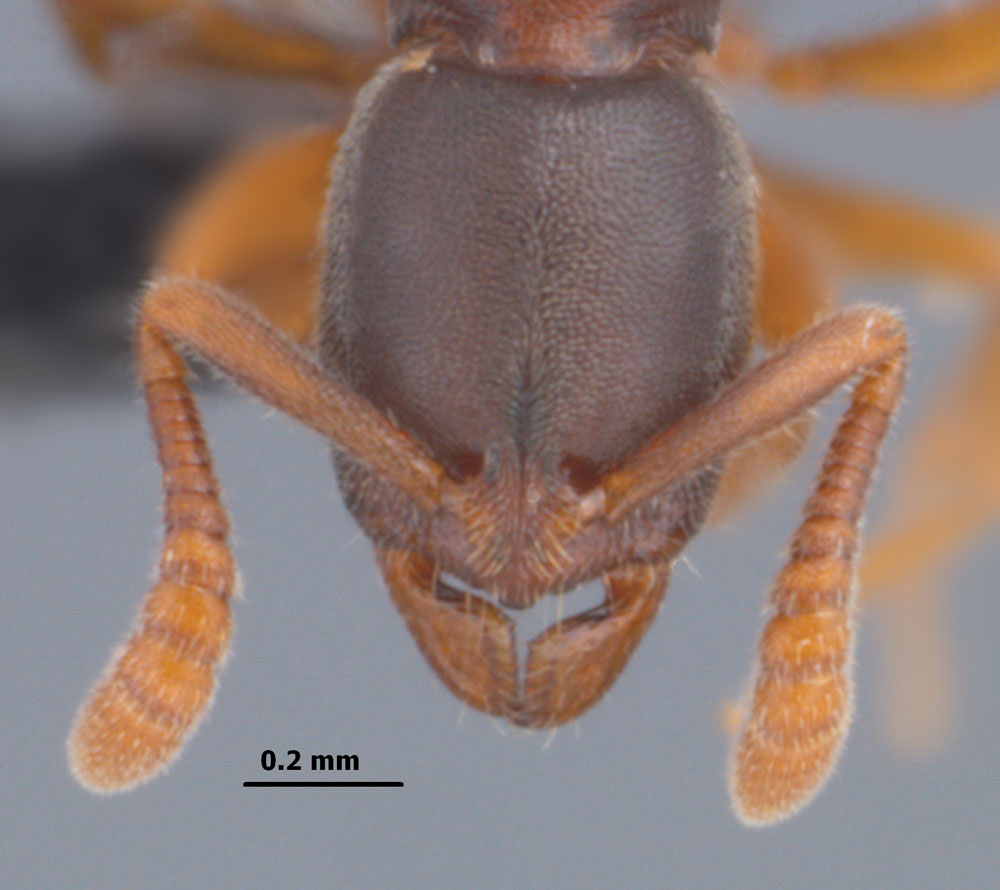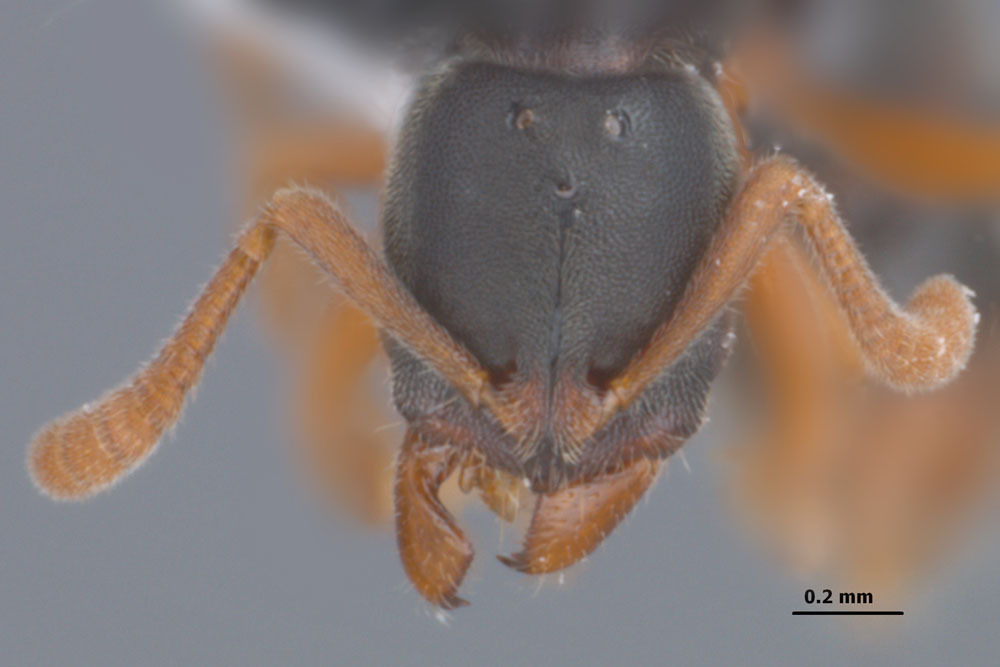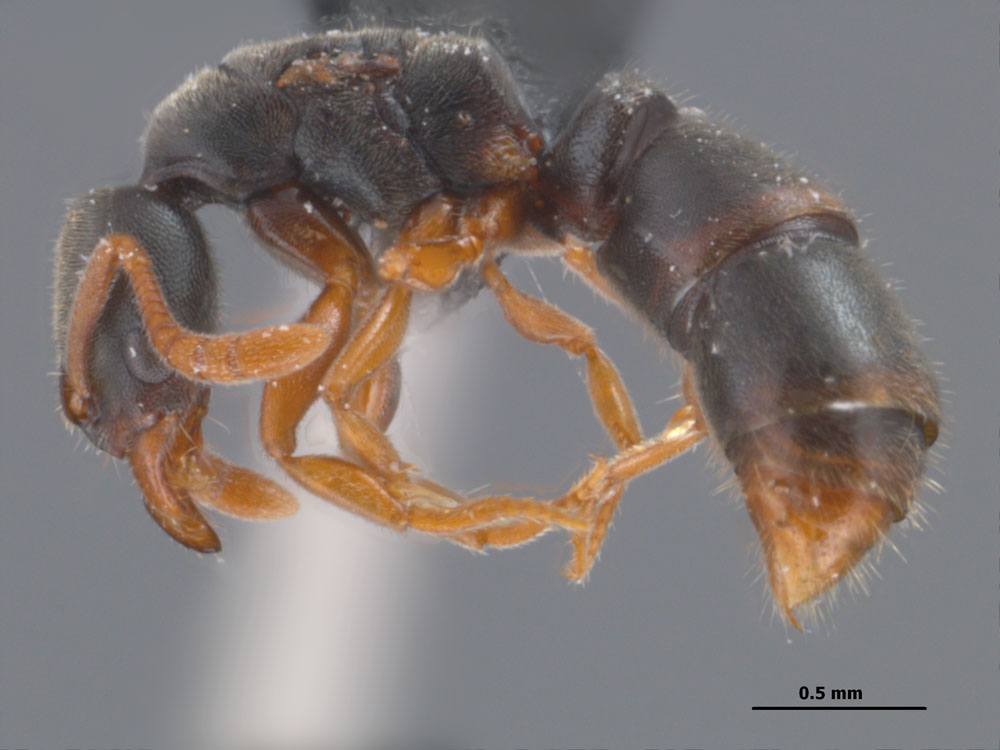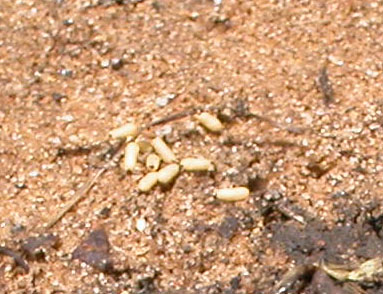|
Subfamily PONERINAE
Tribe PONERINI Ponera pennsylvanica Buckley |
|
|
Ponera pennsylvanica, full face view of a worker (click image to enlarge). |
Ponera pennsylvanica, side view of a worker (click image to enlarge). |
Ponera pennsylvanica, full face view of a queen (click image to enlarge). |
Ponera pennsylvanica, side view of a queen (click image to enlarge). |
Ponera pennsylvanica cocoon and larva |
Ponera pennsylvanica cocoons |
|
Ponera pennsylvanica is a very common ant found in mesic forests of the eastern portions of the United States. The nests of this common, but inconspicuous ant, are typically found under rotting logs, in rotting stumps or logs, in acorns, hickory nuts (or other similar objects), in soil, and leaf mold. The workers are carnivorous and forage in or on the ground. Ponera species have a length of 2-4 mm. The palp formula is 2,2 although this is may be difficult to see. The eyes of the workers are very small and located distinctly anterior to the midlength of the head. (Occasional nests contain ergatoid (worker-like) queens that do not have wings that have large eyes and ocelli). The antennae are composed of 12 segments and end in an indistinct 4 to 5 segmented club. Both promesonotal and mesopropodeal sutures are visible from above. Below the petiole is a subpetiolar process that has a fenestra (circular translucent window) anteriorly and a pair of small teeth that point rearward. The mid and hind tibia have a single pectinate spur near the apex. The tarsi of the mid legs lack short, stout bristles, and the tarsal claws are simple. Larvae are whitish, about 1.0 mm in total length, and possess stout setae on body and two rows of four club-tipped, glandular setae on dorsum. Pupae are encased in a yellowish cocoon. |
|






.jpg)

